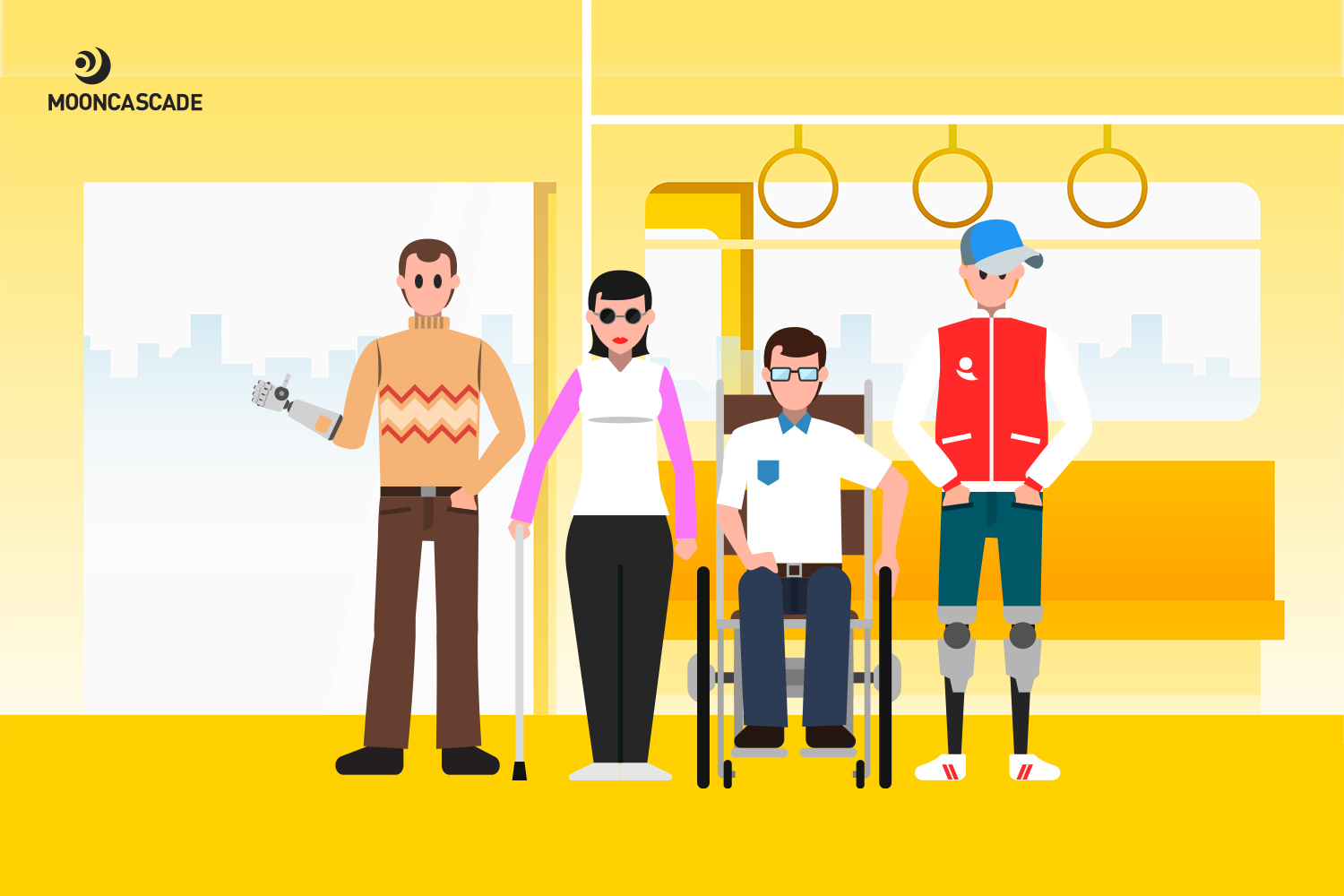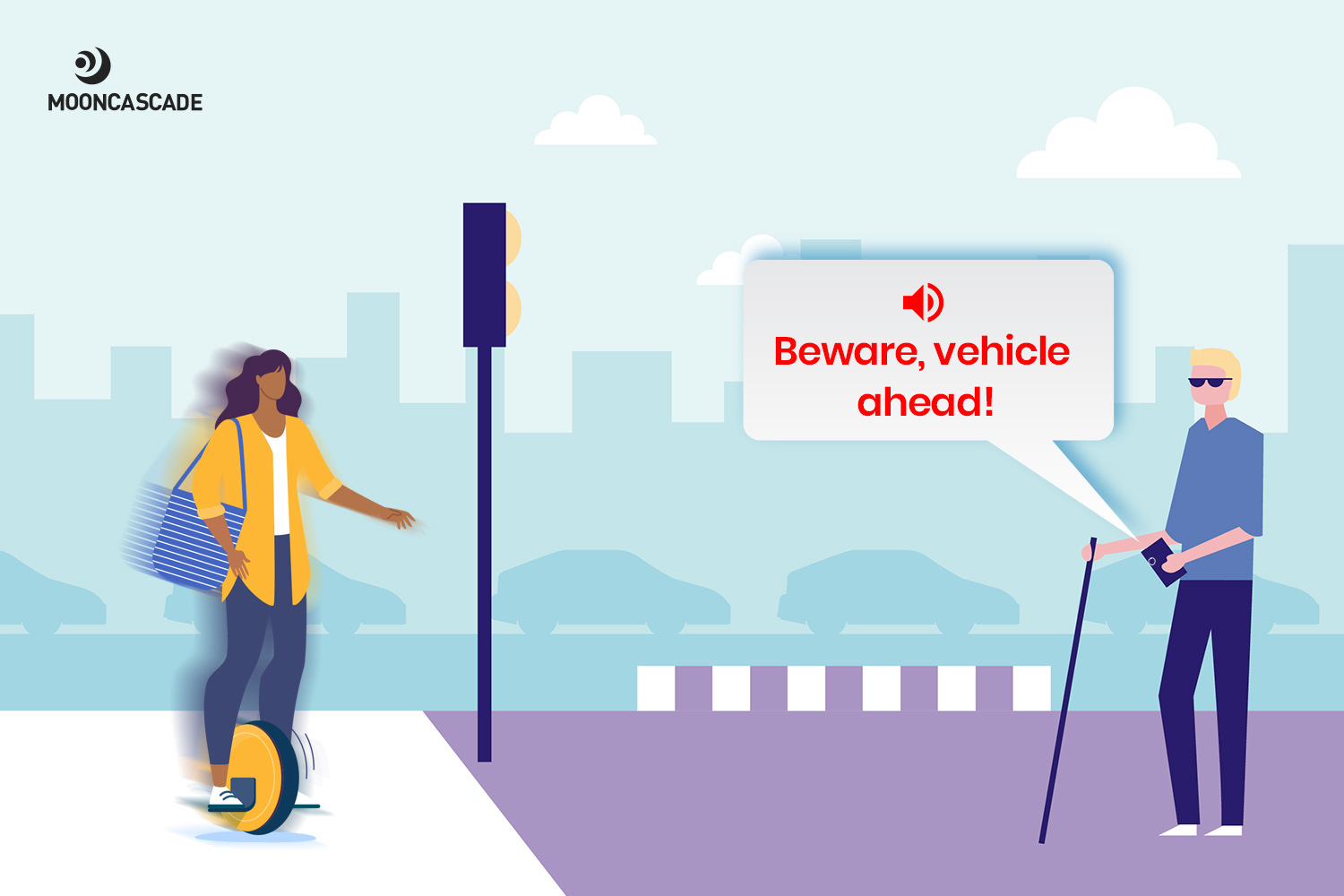The good, the bad, and the ugly: the current state of accessible mobility
In the wake of the climate crisis, changing consumer needs, and technological disruption, the mobility sector has come under increasing pressure to innovate. We’ve seen plenty of changes in response to this, including a new generation of electric vehicles, a breakthrough in the form of micromobility, and, thanks to figures like Greta Thunberg, a shift in mindset that has us choosing trains over planes.
One thing we haven’t seen, however, is a discussion about accessible mobility. Accessibility is part of a larger discipline known as universal design, whose goal is to build things that are easy to use for anyone, in any context. As The Universal Design Handbook explains, this approach has its roots in the years after World War II, when a combination of laws passed to improve mobility for disabled veterans and market-driven responses to aging populations brought accessibility to the front of product development thinking.
Universal design is a powerful approach. Done right, it can increase accessibility for those who need it, improve usability for everyone, and even create a host of unexpected benefits. Curb cuts, for example, were built as a legal requirement for wheelchair users but also help users with strollers, cyclists, and children. Easy-grip scissors, which were designed to be marketed to the elderly, also solve a specific problem while being loved by a wide range of other segments.
Solutions like these have proven to be highly effective, and universal design thinking is at the heart of many of our favorite products. But what role does it play in mobility? Though the industry has given us plenty to talk about in recent years, it remains to be seen if public transportation, cars, and micromobility are as inclusive as they could be. Let’s jump right in and have a look at what’s been accomplished so far.
Aiming for total access in public transportation.

Public transportation is one of the pillars of mobility. In his book Universal Design, Selwyn Goldsmith points out that public transportation plays an essential role in creating an inclusive society by giving people access to employment, community, and social participation. To ensure these things are open to all, mass transportation needs to be as stable, efficient, and barrier-free as possible.
Unfortunately, we’re not quite there yet. The physical layout of infrastructure, including signage and wheelchair access, needs work in many cities around the globe. Less obvious, but equally important, are elements like ticketing machines and ticketing processes in mobile apps, which are also often lacking. If you build an app without sufficient color contrast or integration for screen readers used by the blind, why pretend it’s been designed for everyone?
This is only part of the issue. As our own Heili Strite notes in her article on future mobility, a persistent problem for elderly people today is limited community access. The elderly tend to live in rural areas with less public transportation, which makes it difficult to reach basic services like grocery stores, hospitals, or cultural events. Though there’s been an increased use of ridesharing or delivery apps like Lyft or Postmates to meet this need in California, these solutions remain expensive or simply inaccessible in many areas elsewhere.
Still, there’s hope. In a recent project, the U.K.-based transportation research group TransportFocus created what they call Nine Future Stories, to highlight key expectations and consumer trends in the future of mobility. Their first story, Total Access, provides a promising glimpse into what a lasting solution to accessible mobility could look like.
Total access is based on four principles: maximizing reach, improving safety, reducing costs, and increasing flexibility. The city of Madrid, for example, now plans its city center by paying close attention to how it can be navigated by all sections of society. The idea isn’t to create a solution catered to a specific need or disability, but to imagine a future that includes as many forms of accessibility as possible. And this approach isn’t limited to urban planning—it could easily be applied to other kinds of product development, including public transportation.
Balancing style and accessibility in the automobile industry.

Accessible design has never been much of a concern for the automobile industry. For the most part, cars are produced with looks and performance in mind above all else. Recently, however, this has started to change, triggered by a growing awareness that the world’s population is aging.
It’s estimated that there will be 2 billion elderly people alive by 2050, many of whom will be just as engaged with technology as younger people. To meet the accessibility needs of this growing demographic, car makers are going to have to rethink how they design their products. Physical factors like difficulties entering and exiting vehicles will have to be taken into account along with in-vehicle elements like dashboards, radios, screens, and navigation systems, which are often ill-suited to the needs of elderly users.
An exciting initiative to solve issues like these was started by the MIT AgeLab, who research customer-centric solutions for people that don’t typically get involved in user testing. The AgeLab might test a product while wearing weights, glasses, and ear plugs, to get a better idea of the physical limitations of an elderly user, for example. The idea here isn’t to build “easy to use” products aimed at specific disabilities, but to get a clear idea of a particular segment’s needs and include that thinking in better design practices for everyone.
Plus, this approach isn’t incompatible with style, which every car needs to have if it wants to sell. In universal design thinking, an accessible product should be as usable as its original version, looks included. The question for car manufacturers shouldn’t be how to choose between accessibility and appearance, but to find innovative ways to balance both. While this kind of thinking is currently limited to electric minivans like the Tripod, we’ll likely see more inclusive features in a variety of car models aimed at the general public in the near future.
Integrating sight and mobility-impaired users into micromobility solutions.

We’ve covered two key parts of the mobility industry, public transportation and cars. Now let’s see what the new kid on the block is doing to make accessible design a reality. Last year saw an explosion in micromobility solutions across Europe. In Germany, it’s now legal to drive a scooter up to 20 kilometers per hour, and there are six major e-scooter providers in the country—not to mention competition from Uber Jump and a host of bike rental services.
As market dominance has been the driving force behind many approaches to micromobility, there’s still a long way to go in terms of accessible design. In fact, you’ve probably read headlines about piles of bikes or scooters causing clutter on city streets. It seems that micromobility has been more of a hazard than a helping hand in making accessibility a reality so far.
Luckily, this is slowly changing. Charge is a startup with a vision of “micromobility for all.” The idea is to build micromobility solutions that are accessible, equitable, and sustainable for all of the riders, pedestrians, and communities they serve. This includes two notable accessibility goals: integrating universal design practices to connect the visually impaired with mobility data, and giving wheelchair users access to motorized micromobility solutions through specially-designed devices.
In the first example, Charge plans on incorporating GIS data about the position of e-scooters, e-bikes, and docking stations into services like BlindSquare, to alert people with visual impairments about any possible obstructions along their path. In the second example, they plan on designing devices to allow wheelchair users to benefit from the advantages of motorized micromobility products. While both of these ideas are still in the works—and good for P.R.—, the company’s vision is one that many could learn from.
Accessible mobility: a promising future with plenty of work left to be done.

Though universal design still isn’t as widespread as it should be, we’re seeing more and more mobility players acknowledge that accessibility matters. And as the industry continues to undergo disruption, keep in mind that now is a great time to try new things. Not only will businesses who dive in early grab a healthy market share of underserved segments, they’ll do so by accomplishing a mission that actually does good for the world.
Next time you’re developing a future mobility solution, ask yourself just how accessible your product really is. Hire good UX designers who have empathy and know how to think inclusively. And remember the power of universal design. Because thinking about accessibility won’t just make life easier for people with disabilities. It’ll make life better for everyone.
ARE YOU IN THE MOBILITY BUSINESS YOURSELF?
We can help you to expand your market and increase your user satisfaction by designing and developing accessible and inclusive mobility solutions that fit the needs of all your users. Let’s have a call and see what we can do for you.

